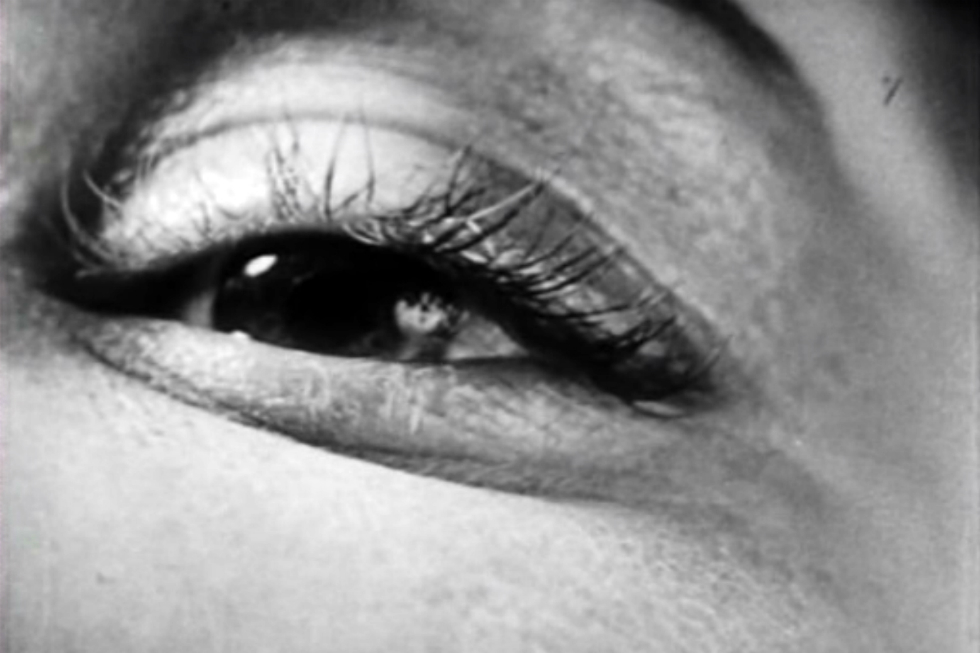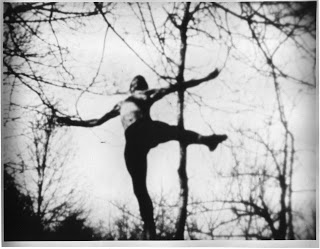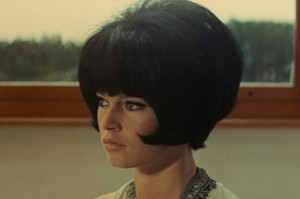Ritual, Magic & Slapstick: The Kazimier’s Silent Film Revival

Adam Scovell looks forward to the next Silent Liverpool event, showcasing the tragicomedy of Larry Semon and the avant-garde choreography of Maya Deren…
Silent film is a description that is at once a contradiction. Apart from underselling the huge range of entertainment from cinema’s first 30-or-so years, it seems an all-out lie; cinema has never been silent and, arguably, it was probably a lot louder in the days before recorded sound was introduced. Compare the experience of watching a film with a full, live orchestra to any speaker system, and they at the very least come out on par.
Silent Liverpool is a little gem of an event that’s been consistently putting on short silent film with live musical scores, and offers a real alternative to the Odeon offer. Their next double-bill — Sunday at the Kazimier Gardens — shows the range that silent film can cover (though hastening to add that one film was made after the official era had come to an end), and the sometimes extraordinary relationship between visuals and live music. It is one that is increasingly being returned to as an ideal way to experience cinema.
The first film on show this Sunday is a surreal slapstick short from the underrated and tragic figure of Larry Semon (1889-1928). Semon was one of the protégées from the Vitagraph Company; one of the early studio successes that were eventually bought out by Warner Brothers. Perhaps because of our mythologising of early Hollywood, Semon’s story is one that seems almost a cinematic fiction in itself.
Working his way up through the old studio system, he earned a fortune from his short comedies, which became vehicles for the likes of Stan Laurel and Oliver Hardy before the pair became a double act. However, due to his extravagant tastes, both in spending a lot of money on making his films (which includes the first attempt at adapting The Wizard Of Oz) and in his personal life, he suffered financial ruin, breakdowns and eventually succumbed to pneumonia at just 39 years of age. If he had lived longer, he would have no doubt been at Gloria Swanson’s card table with Buster Keaton in Wilder’s Sunset Boulevard (1950).
Aside from the tragedy, there is much to enjoy from Semon’s last short film, A Simple Sap (1928), and its surreal sense of humour. In many ways, it resembles the later work of Laurel and Hardy, with Semon playing a hapless grocery worker. Yet the film also contains such odd moments as a woodpecker spitting at Semon after stealing his hat, and a beautifully animated, partly hatched egg walking along the shop counter and skating around it à la Chaplin’s Modern Times (1936); this is far from a purely typical slapstick style, even if there is the potential throwing of a brick.

Also in the film is a rare chance to see Betty Amann, one of silent film’s more enigmatic figures. There’s no doubt that she could have been as big as Louise Brooks or Clara Bow, but instead seems to have taken a more relaxed career approach (which did mean she was awarded the Filmband Award for contribution to German cinema, but not until the mid 1980s). A Simple Sap is one of the shorts she made between her breakthrough role in The Kick Off (1926) and her famous role in Joe May’s Asphalt (1929); a film that all but defined the woozy underground world of a Weimar Berlin full of bobs, jazz and the sexual freedom that the likes of Christopher Isherwood embraced.
Amann would later go on to star in one of Hitchcock’s early pre-code films, Rich and Strange (1931), and so to see her in the comedy A Simple Sap gives it a sense of importance to sit alongside its strange humour and melancholy. The music for this screening will be provided by guitarist Lynny Lynn.
At the other end of the spectrum, the second screening of the night is an entirely different proposition, far from the embracing populism of silent slapstick. Maya Deren‘s (1917-1961) work has seen somewhat of a renaissance recently in spite of much of it still only being available to view online. Deren’s work casts a long shadow over American avant-garde cinema, and everyone from Kenneth Anger to David Lynch owes her much for an array of startling, ethereal imagery. Yet, like Semon, she barely lasted into her 40s (dying at the age of 44) and so again the work on show here, which was her penultimate film, has a sense of brooding.
Ensemble for Somnambulists (1951) exhibits a number of Deren’s interests; chiefly movement and the interplay between light and dark. Building up a motion of bodies in what appears to be a black void, Deren’s natural ability to create dream-like expanses in extremely short periods of time is undeniable genius. She had done the same in earlier shorts, such as Ritual In Transfigured Time (1946) using her own body and the strange movement of reversed dance to create flowing, hypnotic movement.
Deren’s work as choreographer greatly influenced the imagery she was interested in, and perhaps also explains why she pursued a form far more prominent in the silent era; as a dancer, her trust in the mixture of visual movement and music found a natural fit with dialogue-bare film using music as its key reactionary element. Add to this her education, which included a Journalism degree and a Masters in English Literature, which clearly allowed more academic ideas to float into the mix.
Her films showcase such complex themes as ritual, magic, time and dreams, found most famously in Meshes Of The Afternoon (1943) which has had a number of visual motifs lifted by Lynch in particular. For the event, Ensemble for Somnambulists will be scored by the experimental collective, Brood.
Adam Scovell
See A Simple Sap and Ensemble For Somnambulists with live scores at Silent Movies On the Mezz!, The Mezzanine at The Kazimier Gardens, Liverpool, this Sunday 23 November 2014 at 7pm. Donation entry!





